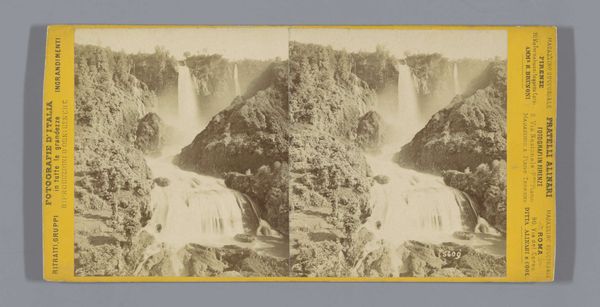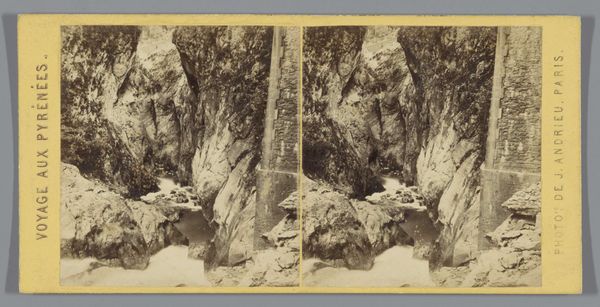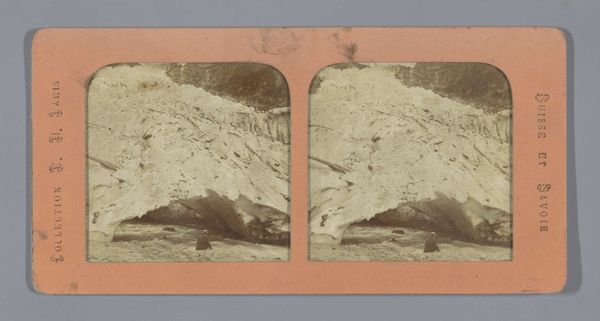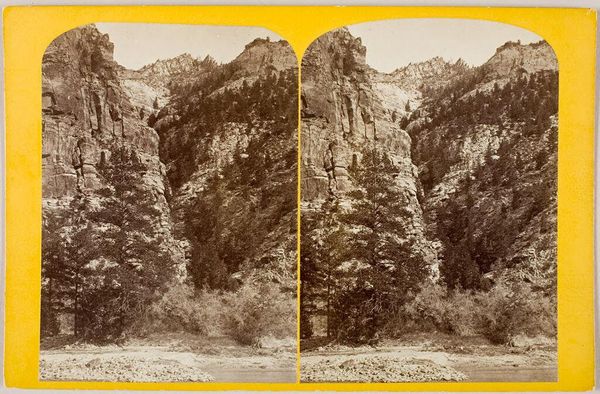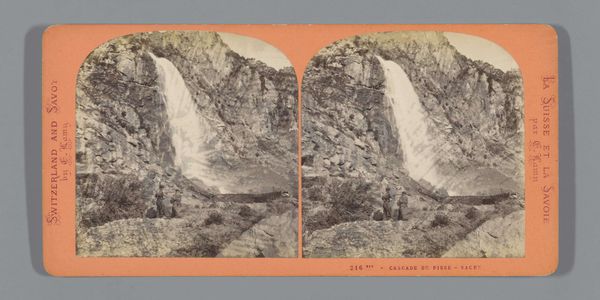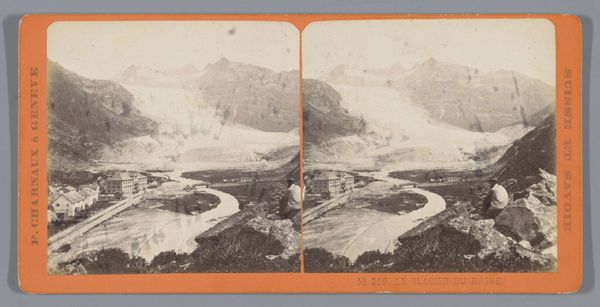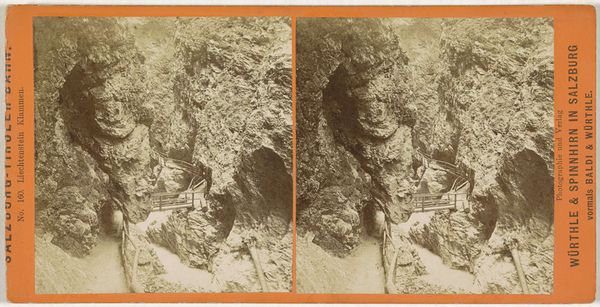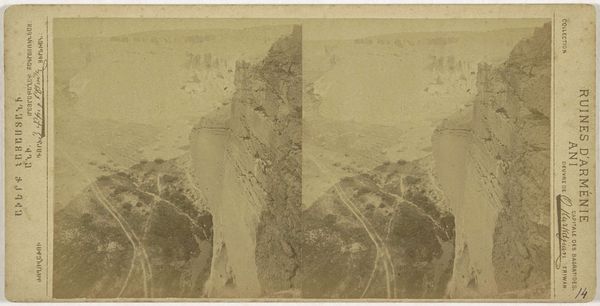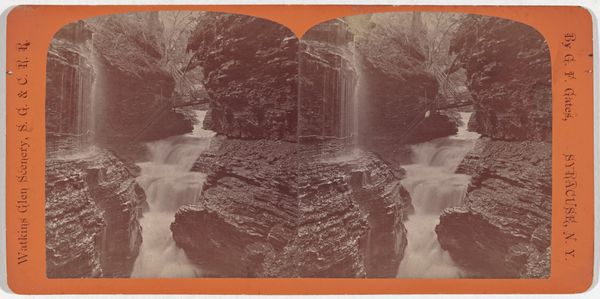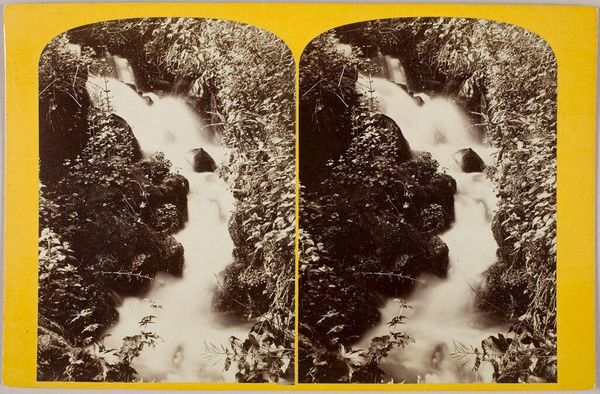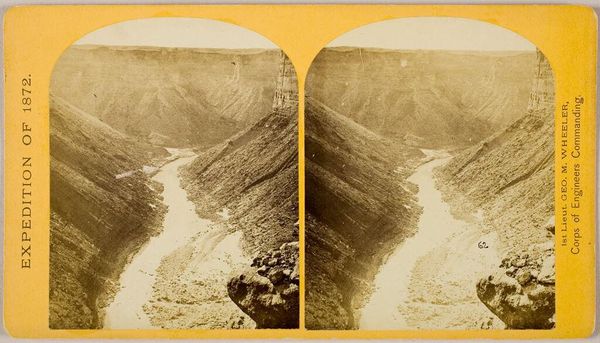
Dimensions: height 87 mm, width 177 mm
Copyright: Rijks Museum: Open Domain
This stereoscopic photograph of the Waldbachstrub waterfall near Hallstatt was created by Baldi and Würthle. It’s an albumen print, made by coating paper with egg white and then exposing it to light through a negative. The albumen process, which dominated photography in the mid-19th century, created prints with fine detail and a glossy surface. Think of it as the Instagram filter of its day. The technique demanded careful preparation of the paper, skilled manipulation of chemicals, and precise timing during exposure and development. The photographer's hand was crucial. Stereoscopic images like this one were extremely popular, creating a sense of depth and realism for the viewer. Sold as souvenirs, they brought exotic landscapes and faraway places into the parlor. The mass production of these images reflects the rise of industrial capitalism, even as the subject matter romanticized the natural world. By emphasizing the labor and context of the photographic process, we can consider how this photograph bridges the gap between art, commerce, and the human desire to capture and possess the beauty of nature.
Comments
No comments
Be the first to comment and join the conversation on the ultimate creative platform.
